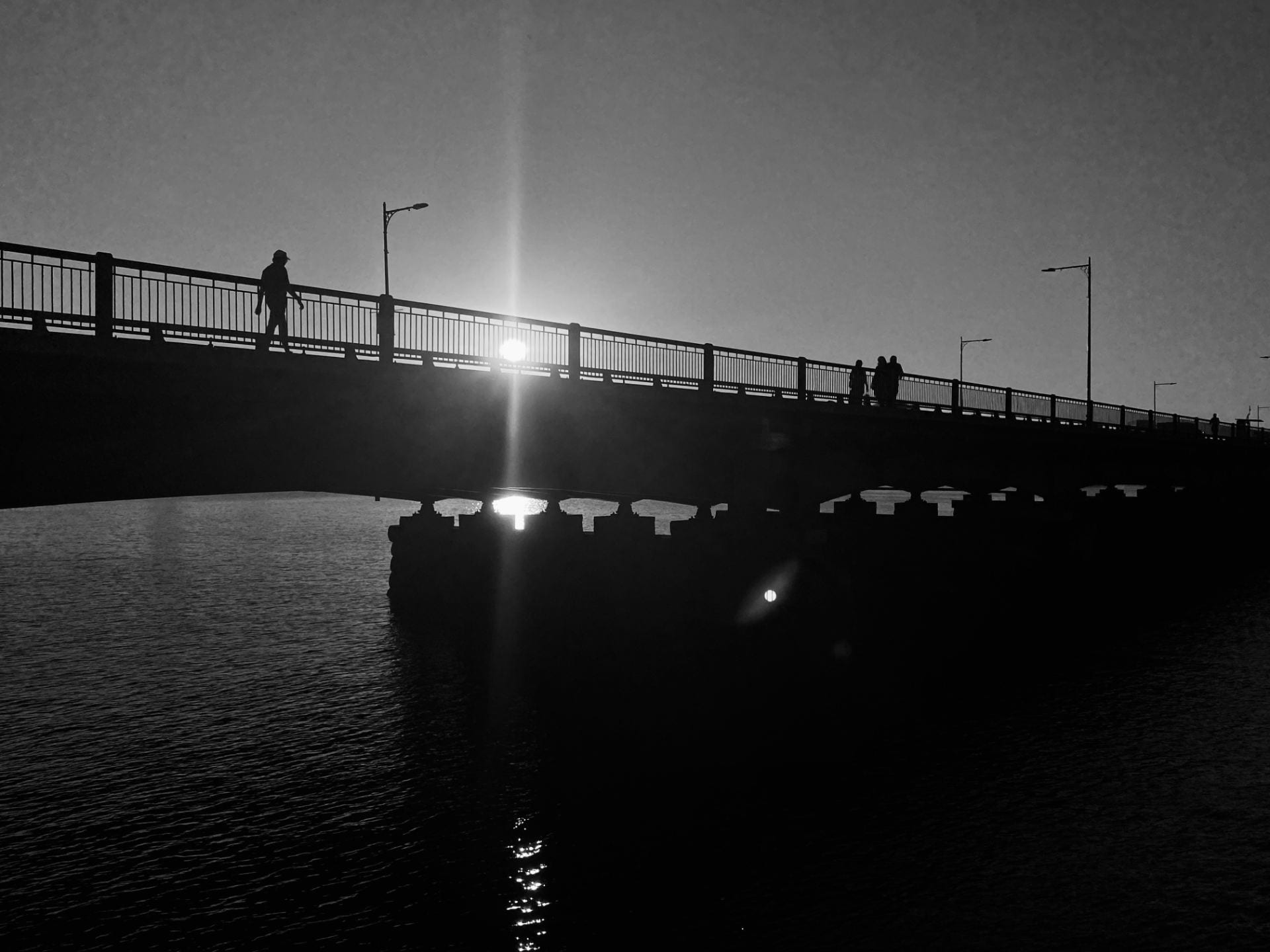Editor’s Note
By SARAH WU, MEL ARTHUR, and GABBY AVENA
Mel Arthur:
What do Bridges mean to me? I want to invoke Christopher Soto and what they wrote in the book titled Queer Poets of Color. They borrow a quote from Gloria E. Anzaldua, who writes, “Bridges are thresholds to other realities, archetypal, primal symbols of shifting consciousness. They are passageways, crossing borders, and changing perspectives. Bridges span liminal (threshold) spaces between worlds, spaces I call nepantla, a Nahuatl word meaning tierra entre medio. Transformations occur in this in-between-space, an unstable, unpredictable, precarious, always-in-transition space lacking clear boundaries.” Phew. One more time… phew.
I was struck by this definition and rendition of the word and therefore wanted to strike the same meaning with my piece. Specifically, the part about transformation within precarious spaces, allowing one’s self to be face to face with who/what/ever is on the other side. For a bridge to me means the gap, the distance, the yearning to be closer. A bridged body is one destroyed, a bridged relationship is one crafted. To bridge means an understanding, the indestructible urge to hold and be held. I bridge to you, you bridge to me. God knows how much we need that.
I allow the bridge to be the thing that the self uses to give dominion over to another, a wicked thing, as Morrison calls it. The bridge is the history that one needs to face because facing it means being in contact with reality, as my friend Baldwin says. Let me stop liberal arts-ing and speak frankly. My piece touches on distance and a complicated sense of care. The words sit apart, divided, unable to bridge towards one another. The bridge exists in flesh, in the shame-love-touch of the subjects. The semi:colon is the threshold, is the very act of shifting consciousness. It’s a wild thing, unstable. There lies the bridge to me. Its uncertainty and ability to disarm have left this piece hard for me to stomach, but I remain in some ways transformed by the theme, and I bridge to you now, asking what the theme has incited within you.
Gabby Avena:
To name a bridge is to make the in-between a site and location. Extending on two planes—the horizontal and the vertical—these sites deny flatness, deny singularity. To bridge is to reach towards dimensionality, and in doing so, towards each other.
What I mean to say is that as a means of connection, the bridge denies us (lonely writers especially) of our tendency towards isolation. This concept can be understood through the skill of relative pitch. Whereas possessing perfect pitch allows one to identify a note precisely upon hearing it alone, relative pitch is the ability to identify a note by comparing it to a reference note and finding the interval between the two. In essence, a person with strong relative pitch can hear two notes and tell you the interval between them, but not the notes themselves. The emphasis on relationality within relative pitch allows one to better tune themselves towards their companions, allows the music to
achieve harmony, allows for the musician to play by ear.
In this issue of The Indicator, we are writing to the relative pitch of the world. We are identifying the interval. In each story, the writer’s message resounds towards the reader, whether through a concrete structure, through some fantastical threshold, or even through the invisible ties of familial duty or romantic desire. Are you listening, dear reader, for the bridge?
For what is important about bridges is not where you were before nor where you are headed to after, but what lies beneath it all. Come and share this bridge with me. Stand with your feet planted on the boards, feel them wobble and shake. Do not look beyond nor back. Look, instead, at the water below. Peer into the waves, see them swirl beneath your feet. Listen closely, for they are reaching towards you. What resounds in your own in-betweens? What words, what name, exists for this distance?
Sarah Wu:
I am at home when my brother tells me he has jumped off a bridge with his friends. We live in Long Island, so there are bridges aplenty. Which bridge? I ask him; he shrugs. He tells me he doesn’t know. He tells me that his friends have parked a boat underneath the bridge for when they surfaced. They swim and pull themselves atop the gently rocking boat, giggling all the while—the thrill of trespassing, of doing something casually illegal that it doesn’t quite become illegal.
It is a little ironic that the tale my brother offers me is the opposite of the piece I have crafted. When I look at him as he tells his tale, his eyes gleam. But I am an older sister, so all I do is worry sometimes. I take the story that my brother has given me, and like a wet towel, I clutch it with my fingers and twist it. A metal basin sits below to catch the droplets underneath. It is with these emotions that I write my new story.
The symbol of a bridge has become so prolific within our culture that it arrives in our minds prepackaged with preconceived notions. We build bridges to bring together individuals. We bridge our differences. At a first glance, a bridge is a symbol that already comes to mind, complete with its narrative themes. But what happens when a bridge no longer does what it is originally designed for?
A burning bridge disintegrates. A bridge in memory fades into consciousness. A bridge between worlds breaks the earth’s atmospheric bubble. A physical bridge can be jumped off of.
In this issue, I invite you to consider the complexity that your unique perspective may bring. Venture beyond what a bridge commonly represents within society, and with this in mind, I ask you as a reader: what do bridges mean for you?
